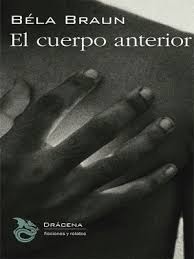
Original Language: Catalán
Year of publication: 2025
Valoración: Between recommended and okay
On the other side of fear Follow the steps of Joana, an already mature woman who likes art and swim, who has two children and works as a restorative and conservative in the MNAC.
Marta Orriols’ novel is well written and is rich in reflections. It manages to print transcendence to the anodine, the trivial and the everyday with great success, in addition to appreciating the beauty of the things and consolations that others provide us, without falling into that grandiloquent eagerness and dignifier of other similar works. Likewise, he is waste humanity and maturity, and, despite transmitting a positive message, he is not afraid to show the negative or disappointing side of existence, nor the oblique and contradictory quality of the human being.
This positive message is precisely what I liked most On the other side of fear. Or, more than the positive message itself, the accompanying gray. And it is that this claim the emotional relationships (with an ex-husband, with a lover who you barely see, with children who see you as a heavy …), and the pleasure we can find in the small daily victories (“resurrect a gerani, advise you to enter, give away”, pg. 262), but always do so, I insist, without falling into the great and dignity.
I must also highlight the pearls of wisdom that splashed On the other side of fear. I will quote only one, but could choose between decades: “The children were the opportunity to relive sensations that had been buried in the past,” pg. 190.
Another aspect of On the other side of fear That has captivated me is the complexity of relationships between Joana and the rest of the characters. Complexity present especially in the interactions he maintains with Biel, the father of his children (with whom he continues to take well and who still wants that they are separated), with Mateu, Catalan with whom he intimidated briefly but intensely abroad, or with his late parents.
While I could put some fights to On the other side of fearadvance that they are so insignificant that at no time do they significantly pour the whole. The first has to do with Orriols prose; And I have in the feeling that some of their paragraphs could be subdivided into several, because the block does not always provide related information.
The second paste: that the narrative voice of On the other side of fear Not only does it contribute little to questioning the reader, but also this stylistic resource is somewhat confusing. In my opinion, it is used so sporadic that it does not become relevant. In addition, initially it seems that it intends to underline the universality of the work, emphasize how Joana is, despite its particularities, similar in the background to the rest of human beings (“Tot she was, in realitat, the one that Som Sempre tots nosaltres”, pg. 125); However, at concrete times, the way in which the narrative voice question the reader seems to sterilely resignify both the narrator and the reader himself (pg. 39, 51, 52, 180, etc …).
The third paste that would put On the other side of fear It is that it addresses current issues that, for my liking, there are plenty of, and that in the long run they make the work not aged so well (I think, for example, in the relationship between the protagonist and social networks or True Crime, barely outlined as a sociological analysis and characterization threat). In fact, Orriols considers so many topics (love, maternity, aging, orphanhood, art, machismo, climate change …) that not all have the same relevance, interest, effectiveness or execution.
Be that as it may, On the other side of fear It is a mature and solvent novel, both in the form and in the background. It is convenient to read it and let its pages resonate in us. I, for example, that I have never married, and even less divorced, I have moved with the way Joana talks about her relationship with her ex -husband. By way of closing, attached some passages that talk about this:
“Who knows if, in the daring of a separation, she did not consider that that did not have to be reversible. / He did not calculate the collateral damage: that dinners and friends (…) would dissolve and be uncomfortable (…). Nor did she calculate that there would be a woman who would not be the round of a belly full of a child who would not be her (…), “Pg. 177.
“The understanding was not possible under one roof. (…) Under one roof the most difficult questions are caused, often the selfishness, the defense of their own defects (…). Outside, however, they could continue to protect themselves, respecting, taking care of themselves. Outside it was a good place to love. ”, Pg. 250.
“It’s slow to feelings. Why should he be dragged by the rampant rhythm of life and spinning a sheet? He could be hooked on the esteem of his children’s father and the attraction of Matthew the rest of his life. It would have enough and it would seem very much. “, Pg. 261.
Source: https://unlibroaldia.blogspot.com/2025/05/marta-orriols-laltra-banda-de-la-por.html


